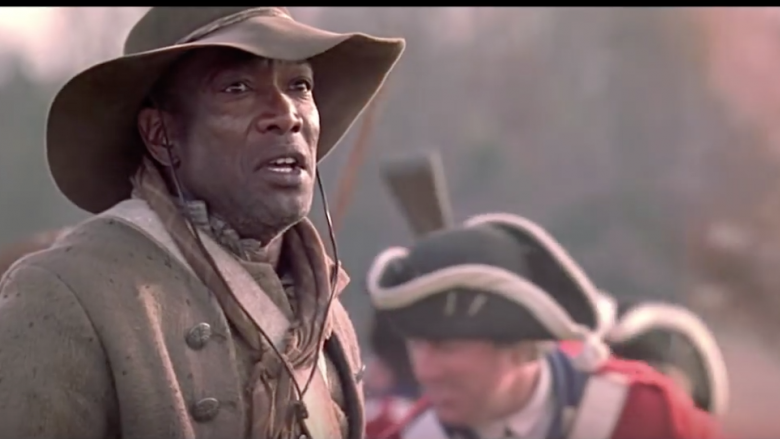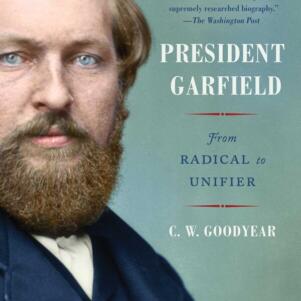‘Crossing Point’: A Tour de Force of the Revolution and America’s Littlest Colony
By Robert Bradley | March 7, 2018, 11:16 EST

When you hear “American Revolution,” do you think Rhode Island? You should, as James Glickman’s marvelous and surprising novel Crossing Point makes clear. The book tells the story of leading men and women in Rhode Island who played a significant role in the War for Independence. It also accurately describes the relationships of rebels and loyalists, blacks and whites, masters and slaves, and the officers and men in the Continental Army.
Not much has been written about slavery in New England in the 18th century so it will likely come as a surprise to many that Rhode Island was home to more than 3,700 slaves in 1774. According to Douglas Harper’s 2003 book Slavery in the North, slaves represented 6.3 percent of the population of Rhode Island in 1774. This percentage was twice as high as any other state in New England. As a maritime state, Rhode Islanders played a major role in the slave trade during the 18th century — including John Brown, one of the prime movers in the founding of Brown University in the 1760s — which accounted for the greater numbers of slaves proportionately than states such as Connecticut and Massachusetts. Also, Rhode Island was home to some larger farms of thousands of acres in the southern part of the state, and these farms were organized in a similar fashion to plantations in the South.
Glickman brings this chapter in the institution of slavery in America to life vividly through the character of Guy Watson. In 1775 when the American Revolution commences, Watson is a slave whose master, John Hazard, has a farm near Kingston, Rhode Island, which is in the southern part of the state. Watson is one of the five slaves owned by Hazard, who is a loyalist. Watson is such a good carpenter and handyman that Hazard earns money by “leasing” him out to other farmers in the area. He also uses Watson to spy on rebel activity in Rhode Island and Massachusetts. As the battles at Lexington and Concord unfold, Watson travels north as a servant to newly minted Captain Ward of the Rhode Island army. In the wake of the battle at Bunker Hill, they join General George Washington’s Continental Army which is nothing more than a disorganized militia headquartered in Cambridge.
Then they join Colonel Benedict Arnold’s army of volunteers, which fights its way up the Kennebec River in an attempt to capture Quebec in late 1775, thereby annexing all of Canada.
This is one of Washington’s first strategic moves. Assembling a force of 1,100 volunteers from Connecticut, Massachusetts, Vermont, New Hampshire, and Rhode Island under the command of Colonel Benedict Arnold, Washington sends Arnold north along with Brigadier General Richard Montgomery. Montgomery takes his forces north in the region of Lake Champlain and is able to capture Montreal almost without a fight. General Montgomery then swings east to join Arnold’s assault on the fortress of Quebec. Most Americans know little of this chapter in the American Revolution. The history books focus instead on Knox’s heroic feat of transporting the cannons from Fort Ticonderoga to Dorchester Heights, which forces the British to evacuate Boston in March 1776.
Arnold’s army’s 350-mile journey up the Kennebec River and through the Maine woods to Quebec in the fall of 1775 is a saga of incredible hardship and fortitude. The boats were heavy and leaked, the portages were grueling, and food ran out. An early winter reduced the army to starvation rations. Some units deserted, and many men died on the march. Of the 1,100 who started out, only 600 reached Quebec City — just as winter set in. Arnold and Montgomery first besieged Quebec, but this strategy did not work. Finally, on December 31st, their reduced numbers climbed to the Plains of Abraham and attacked Quebec, which was well fortified. It was a disastrous engagement. Montgomery was killed, Arnold was wounded, and many other Americans were killed, wounded, or captured. Glickman tells the story well and makes it clear that it was a miracle that any Americans survived the engagement to fight again.
The main characters rejoin the Continental Army, and the author follows the main Rhode Island army units through many other battles and engagements in the war. There is an excellent description of the siege and battle for Fort Mifflin in the fall of 1777, as the British were seeking control of the Delaware River in their efforts to capture Philadelphia. There is also an enlightening account of the siege of Newport and the battle that followed it in August 1778. These battles are rarely narrated in most histories in the War for Independence, and Glickman does a fine job describing the roles of leading Rhode Island officers in these engagements.
But Glickman’s major achievement is describing the culture and daily life of the protagonists, focusing on some of the leading families in Rhode Island – both loyalists and rebels. The reader understands what the motivations of the main characters were throughout the war. Glickman has produced a thoroughly enjoyable novel which enlightens us about the origins of our land.

Robert H. Bradley is Chairman of Bradley, Foster & Sargent Inc., a $3.6 billion wealth management firm that has offices in Hartford, Connecticut, and Wellesley, Massachusetts. This column represents his personal views and does not represent the views of the firm. Read other articles by him here.











